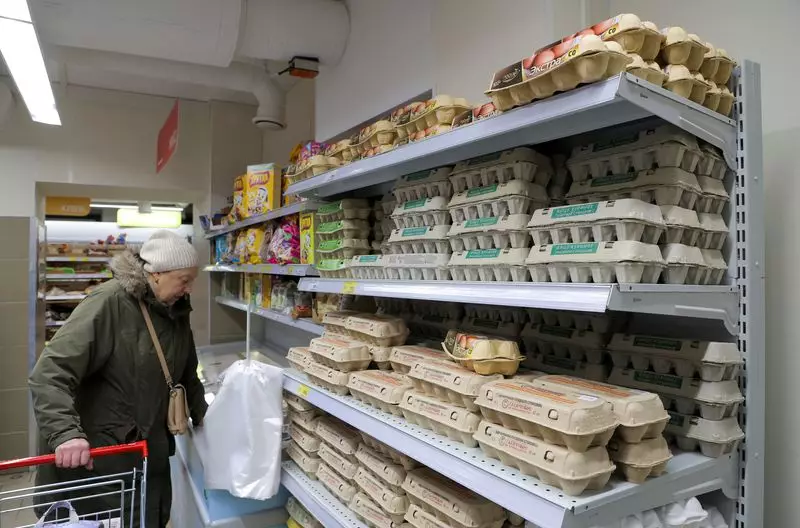Recent data from Russia reveals alarming inflation rates, reaching a staggering 9.5% for the year, as confirmed by the national statistical agency Rosstat. The consumer price index saw a notable increase of 0.33% in the week leading up to December 23. This surge has raised critical concerns among economists and policymakers alike, considering the Russian central bank’s recent decision to hold the key interest rate steady at 21%. Initially aiming for inflation to hover around 4%, the path taken by the central bank appears increasingly precarious, as the broader economic landscape poses challenges that contradict these ambitions.
A significant driver behind the inflationary pressure is the seasonal volatility of food prices, particularly fruits and vegetables. For instance, within a mere week, cucumber prices skyrocketed by 8.3%, while tomatoes saw a 1.9% increase. This upward trend is not limited to transient produce, as less volatile food categories like eggs and frozen fish registered price hikes of 1.7% and 1.4%, respectively. These figures suggest a pervasive inflationary environment that is likely to unsettle consumer confidence and purchasing power across various sectors, beyond just essentials.
Initially, the central bank had set an inflation target of a maximum of 8.5% for the year, demonstrating an optimistic outlook in light of preceding economic conditions. However, this forecast has since been adjusted, with Andrei Gangan, the head of the central bank’s monetary policy department, indicating a revised projection of full-year inflation somewhere between 9.6% and 9.8%. This revision sends a clear message: the central bank is grappling with limitations in its ability to control inflation and effectively stabilize the economy.
Consumer sentiment is further illustrated by rising inflationary expectations among households, which have climbed to 13.9% in December — the highest level observed throughout the year. This mindset reflects a general apprehension regarding future pricing trends, prompting consumers to adjust their spending habits. Households are becoming increasingly aware of rising costs in not just daily necessities but also in sectors like home appliances and electronic devices, indicating that inflation is permeating through the economy, affecting a broader range of products.
The rising inflation in Russia presents a multifaceted challenge to policymakers and consumers alike. While the central bank’s efforts to control inflation through monetary policy adjustments remain ongoing, the persistent increases in food prices and consumer expectations signal a difficult road ahead. As households prepare for a future characterized by elevated prices and reduced purchasing power, the overarching question remains: how will Russia navigate this inflationary landscape, and what measures will be implemented to restore stability within its economy? With the stakes as high as they are, ongoing vigilance and adaptable strategies will be crucial for both the government and its citizens in the months to come.

